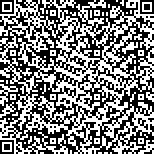| 摘要: |
| 1998年9月利用氢化物发生原子荧光光谱测试方法对渤海中央海区共8个断面30个站位的无机硒进行了测定。结果表明,渤海无机硒总量、Se4 含量的变化范围分别为0.73-2.57nmoL/L、0.18-0.72nmol/L,平均含量分别为1.31nmol/L和0.47nmol/L;Se4 /Se6 比值的平均值为0.68。渤海无机硒的含量与大洋水相当,无机硒主要以Se6 为主。黄河对渤海的贡献非常明显,为渤海无机硒的主要来源之一。渤海无机硒的平面分布存在明显的梯度,沿岸向中央海区递减,垂直分布较均匀,表、底层差别不大。渤海无机硒的分布明显受两个水团的影响:一个是来自黄河的冲淡水,另一个是从渤海海峡北部进入的黄海水团。 |
| 关键词: 无机硒,形态,分布,渤海 |
| DOI: |
| 分类号: |
| 基金项目:中德合作项目,03F0189A号;国家重点基础研究专项经费资助项目,G1999043705号;上海市重点学科自然地理学“重中之重”资助项目,2003 |
附件 |
|
| SPECIES AND DISTRIBUTION OF INORGANIC SELENIUM IN THE BOHAI SEA |
|
YAO Qing-Zhen1,2, ZHANG Jing2,3
|
|
1.Fisheries college,Shanghai Fisheries University;2.Stale Key Laboratory of Estuarine and Coastal Research,East China Normal University;3.College of Chemistry and Chemical Engineering,Ocean University of China
|
| Abstract: |
| In this work we reported the data of inorganic selenium species from the Central Bohai(118.5°-120.0°E and 38.0°-39.0°N)in September 1998.The field observations were undertaken through the cruise of “R/V Dong Fang Hong 2”.Water samples were taken at 30 grid stations to determine inorganic selenium.Samples were collected using 10L Niskin bottles deployed by CTD rosette(Model:Seabird 911 Plus).Samples of depth profiles were taken according to CTD readings.Water samples were filtered immediately on board within clean bench through precleaned 0.45μm Nuclepore filters. The filtrates were placed in 500ml acid-cleaned polyethylene bottles and acidified to pH 2 with HCl and kept frozen.The study is aimed to understand the selenium dynamics in the Bohai Sea and its relationship with sustainability of ecosystems at low tropic leve1.
Selenite is determined by hydrade generation and Atomic Fluorescence Spectrometry(HG-AFS)in combination,with detection limit 0.06nmol/L.The HG-AFS determinations are made in triplicate with precision <5% at concentration of 0.5nmol/L.Dissolved inorganic selenium (DISe) is determined by HG-AFS after boiling samples with acidity of 4mol/L(HCl)for 6 min to transform selenium to selenite.Difference between DISe and selenite provide information of selenate.The detection limit of selenate is 0.09nmol/L with the precision of 5.4% The precision and accuracy of inorganic selenium analysis was daily monitored by national standard samples.The recovery of the determination is 95%-105% .
Concentrations ranged from 0.26-0.69nmol/L for selenite and 0.80-2.47nmol/L for DISe in the Bohai Sea,with average of 0.47nmol/L and 1.31nmol/L,respectively.The concentrations of selenite and DISe decreased gradiently from the coastal to the central of Bohai Sea.The highest value of 0.69nmol/L for selenite and 2.47nmol/L for DISe were found at the southwest part of study area of the Laizhou Bay,a region affected by the Huanghe inflow.Higher levels of selenite and DISe were also found in the Liaodong Bay with a mean value of 0.60nmol/L at both surface and near-bottom waters.The lowest values of selenite 0.27nmol/L and DISe 0.64nmol/L were found at the Bohai Strait showing influence of the Yellow Sea.Moreover,the concentration of selenite,a thermodynamically unstable species,was lower than that of selenate from most stations of Bohai Sea.The ratio of Se4 /Se6 varied between 0.34 and 1.95, with an average of 0.68.The Se4 /Se6 ratio has different distribution from those of selenite and DISe, it is lower than 0.5 in most part of study area except at Liaodong Bay,where Se4 /Se6 is >0.5 and decrease gradiently to the central of Bohai Sea.Hence,the predominant species of dissolved inorganic selenium found in the Bohai Sea is selenate.The speciation of DISe was mainly controlled by the biological process in September 1998.
Water column is well mixed in most part of the Bohai Sea.Data of selenite and DISe are comparable between surface and near-bottom waters.However.stratification iS found at section A1-A4 because of the input of the cold Yellow Sea water,where selenite and DISe concentrations differs between the surface and bottom waters in September.Concentrations increased gradually from 0.20nmol/L for selenite and 0.77 nmol/L for DISe at surface water to 0.41nmol/L and 1.58nmol /L near-bottom in the north of the Bohai Strait,respectively.Salinity data shows 32.0 for the bottom and 31.4 for the surface.There exits two water masses in the area,one comes from Huanghe(Yellow) River and the other from Yellow Sea.Huanghe River is one of the main source of inorganic selenium. |
| Key words: Inorganic selenium,Species,Distribution,Bohai Sea |
